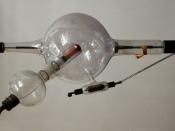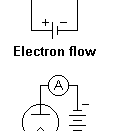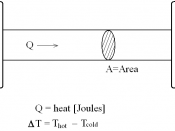Design features of the Stationary anode tube (pg168)
Glass envelope; made from borosilicate glass in order to stand high temperatures. Also acts as an electrical insulator between the negative cathode and positive anode. Contains the vaccum and supports the electrodes.
Vaccum; All air is excluded within the glass envelope. This prevents oxidation of the electrodes and acts as an electrical insulator. Also ensures that thermionic electrons moving across the tube do not collide with any gas atoms which would be ionized and reduce the kinetic energy of the thermionic electrons.
Cathode; Consists of a coiled filament of tungsten wire enclosed in a focusing hood of focusing cup.
Filament; releases a supply of electrons into the vaccum by thermionic emission. Tungsten is chosen as the filament material for the following reasons;
1) High melting point (3387 degrees C)
2) Low vapour pressure (about 5000kPa) Vapour pressure is the pressure at which a substance no longer evaporates.
Low vapour pressure of tungsten means that when hot, it releases less vapour into the vaccum than other materials.
3) Ductile. Tungsten can be drawn (stretched) into the fine wire needed to form the filament.
4) low work function (4.5 eV). Tungsten exhibits thermionic emission at temperatures well below its melting point.
Focusing hood; prevents the electron beam from diverging as it crosses to the anode.
Anode; Most of the anode is made from copper because copper is a good conductor of heat. The Thermal conductivity of copper is about 400 W m-1 K-1 to allow it to absorb more heat. Other characteristics of copper particularly its low melting point and low proton number, make it a bad choice as a source of x-rays. A tungsten block known as the target is therefore insert into the surface of the anode and the electrons are focused...



Comment
This really isn't eassy material. Would have been useful as an outline.
2 out of 2 people found this comment useful.